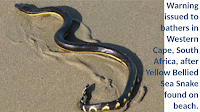Cobras, Naja spp., are a highly distinctive and widespread group of Venomous Snakes, responsible for many cases of Snake-bites in Humans across a wide geographical area every year, with the number of bites being particularly high in South and Southeast Asia and southern China. The toxins found within the venom of Cobras varies from species to species, with the effect that an antivenom developed to treat the bite of one species will not counteract the venom from the bite of another. Unfortunately, the taxonomy of Asian Cobras is still not fully understood, with many populations potentially assigned to the wrong species, or even to cryptic species (species which resemble other species upon physical examination, but which are genetically distinct).
All Asian Cobras were originally placed in the species Naja naja by Linnaeus in 1758, with multiple subspecies and colour variants recognised in the following years. Eventually, this proved to be unreliable, with the species being split into several new species from 1768 onwards. There are now twelve recognised species of Cobra in Asia, including two found in China.
The Monocled Cobra, Naja kaouthia, was first described by René-Primevère Lesson from Bengal (modern Bangladesh) in 1831. Populations of Cobras assigned to this species are currently found in northeastern India, Bangladesh, Bhutan, Nepal, Myanmar, Cambodia, Laos, northern Malaysia, southern Vietnam, Thailand and southern China. However, these species vary greatly in their colouration, spitting behaviour, and even the composition of their venom, making it likely that not all these Cobras do in fact belong to the same species. In China this species is known from the south and southwestern parts of Yunnan, the southwestern part of Sichuan, Xizang (Tibet Autonomous Region), and Guangxi.
The Chinese Cobra, Naja atra, is known from southern China, south of the Yangtze River, including Zhejiang, Fujian, Taiwan, Guangdong, Hainan, Guangxi, Macao, Hong Kong, Jiangxi, Anhui, Hubei, Hunan and Guizhou. It is also found in northern Vietnam. The Yunnan population of this species is known to be genetically distinct from other populations, including that from Zhoushan Island in Zhejiang Province, which is the population from which the species was first described.
Thus, both populations of Cobras in Yunnan Province, appear to present taxonomic problems, and may not belong to the species to which they are currently assigned.
In a paper published in the journal Animals on 9 December 2022, Sheng‑Chao Shi of Guangxi Normal University, and the Chengdu Institute of Biology, Gernot Vogel of the Society for Southeast Asian Herpetology, Li Ding, also of the Chengdu Institute of Biology, Ding‑Qi Rao and Shuo Liu of the Kunming Institute of Zoology, Liang Zhang of the Institute of Zoology of the Guangdong Academy of Sciences, Zheng‑Jun Wu, also of Guangxi Normal University, and Ze‑Ning Chen, again of Guangxi Normal University, and the Chengdu Institute of Biology, re-examine the distributions of Naja kaouthia and Naja atra in China and South and Southeast Asia, and describe a new species of Cobra from China.
The new species is named Naja fuxi, in reference to Fuxi (伏羲), an ancestral spirit in Chinese mythology, often depicted as a half-Man, half-Snake figure in a rearing Cobra posture. It is described from 34 specimens from Sichuan and Yunnan provinces, from populations previously assigned to Naja kaouthia.
The examined adult specimens of Naja fuxi ranged from 680 to 1165 mm in length, and can be distinguished from other Cobras by the presence of a series of well-spaced narrow crossbands along the length of the body and tail. These Snakes are mostly buff-coloured, and have 19-29 scale rows on the front part of their bodies, 19-27 on their mid-section, and 12-19 on the posterior part. The fangs are short, and not adapted to spitting.
Naja fuxi was found in tropical and subtropical areas at altitudes of between 1000 and 1400 m above sealevel. It favours gentle slopes, with open bush or forest edge environments. It is known to consume a wide range of prey, including Frogs, Snakes, Birds, and small Mammals. It sometimes enters settlements to take chicks, creating a potential for conflict with Humans, and records suggest it is the Snake responsible for most bites suffered by Humans in Xishuangbanna Prefecture.
See also...
Follow Sciency Thoughts on Facebook.
Follow Sciency Thoughts on Twitter.







